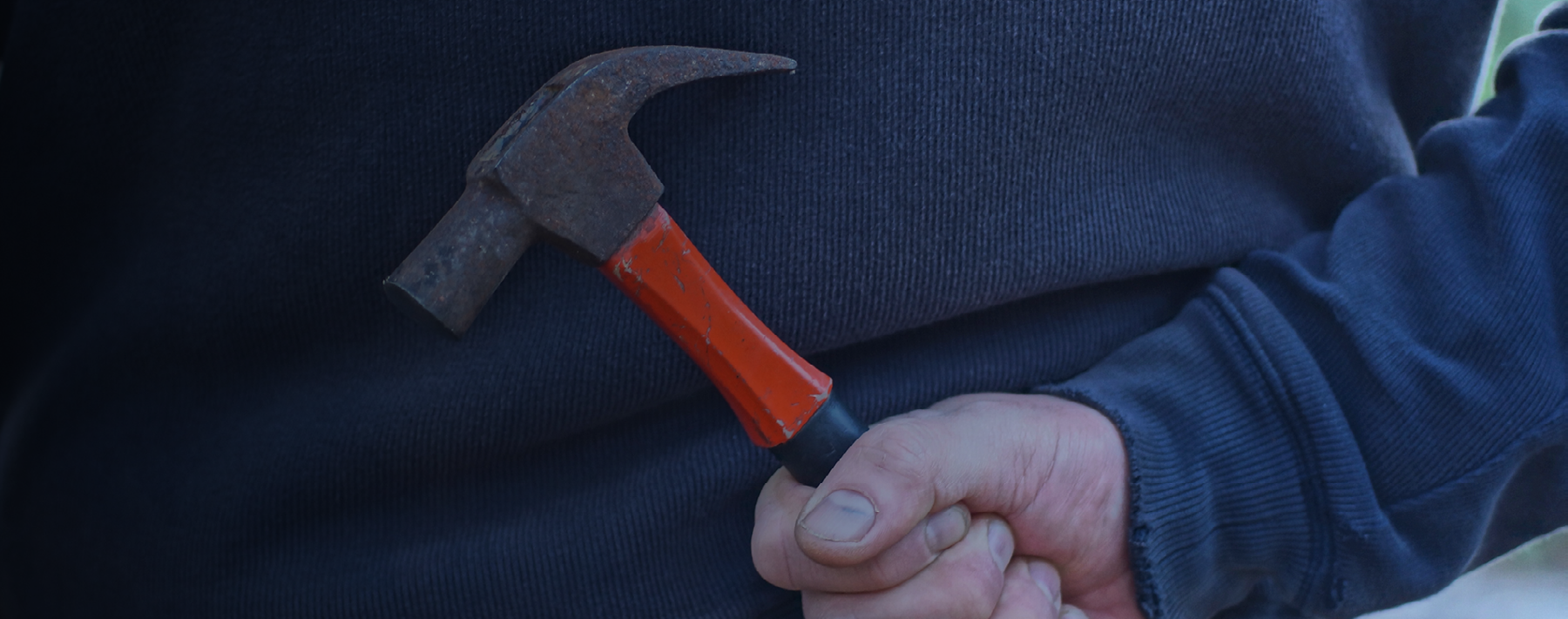Human beings, regardless of training and experience, are not robots. They have unique physical attributes, states of health and life experiences that shape the context in which they perceive their world.
And police officers are human beings. A job title, training or experience does not mean an officer’s brain will process information any different than that of a civilian. And yet, too often the expectations the public—and even law enforcement agencies—places on police officers fail to account for the limitations of sensory input and processing.
How police officers perceive and remember details of an incident becomes critically important when we’re reviewing police use of force incidents. It’s not uncommon for an officer’s recollection of an incident to contain inconsistencies when compared with witness accounts, the recollections of other officers and video and audio footage. It’s easy for members of the public or the investigative team to conclude that these inconsistencies are evidence of collusion—and even that the officer is deliberately trying to distort the details of the incident. But when we consider the science of memory, we should probably be more suspicious of recollections that exactly match one another.
Certainly, there have been cases where officers provided misleading, incomplete or false recollections to shape the outcome of an investigation. But if we assume officers are engaging in such behavior frequently, we not only do them a disservice, we also fail to acknowledge an established body of science proving that memory and recollection is far from the robot-like qualities we expect. This science provides investigators yet another tool to use when conducting thorough and impartial investigations of police use of force incidents.
Key Properties of Memory
Before we get into why officer recollection of police use of force events can be incomplete and inconsistent, let’s establish some basic principles about how memory works. The British Psychological Society Research Board notes four key properties of memory:
1. Memory is a record of a person’s experience of reality; it is not a record of reality itself, like a video-recording. It is a product of a mind interacting with reality.
2. Memories are samples of experience. They are specific, time-compressed, one-moment-in-time summaries. They are never a complete record of an experience.
3. Remembering is a constructive mental process. Memories contain general knowledge of experiences and an understanding of the meaning of an experience. As a result, memories of specific details may be inaccurate, yet more accurate for generalized contextual information.
4. Memories are part of the present moment; they are part of “now.” They are part of the context in which they are recalled (which includes cognitive, emotional, historical, physical, social and cultural factors).
Finite Attention
The first factor affecting our ability to recall incidents is that attention is a finite resource, allocated according to need. That’s why you can be looking directly at something and not see it—because your mind is focused elsewhere. Marc Green, Ph.D., an expert in perception, attention, reaction time and memory, describes attention like a bucket of water: Every cup or spoonful from the bucket leaves less water (attention) for other purposes.
Have you ever walked through a bustling, crowded bar or party looking for a specific person, focused on their voice? You might later learn several other people said hello to you, but you did not acknowledge them. In fact, you cannot recall seeing them or hearing their voices. This phenomenon was coined the “cocktail party effect” by British cognitive scientist Colin Cherry in the 1950s. Paying attention to one type of sensory input (auditory, visual, etc.) can impair attention to another. Another example: driving while talking on a cell phone.
Although training and experience may influence what we pay attention to, it does not provide more water for the bucket. Much like a computer, the human brain possesses a determinate amount of processing power, and once the processing threshold is surpassed, our ability to process, store and subsequently recall information is negatively impacted.
Selective Attention
The second factor affecting recall is that attention is selective. William Lewinski, Ph.D., director of the Force Science Research Center, notes, “The act of perceiving is dependent upon the direction and quality of the senses of the perceiver, and it varies among individuals due to nutrition, fatigue, interest, etc. of the perceiver.”
Donald Broadbent, an experimental psychologist who expanded on Colin Cherry’s research, used the Filter Model to explain why some sensory input is processed by the brain while some is not. Broadbent proposed that because attention is finite, we need a filter to selectively choose from all the stimuli coming to us. Information that we deem important gets through the filter and goes on for further processing in the brain. Information that is filtered out is no longer available to us. We won’t remember seeing something, even if we were staring right at it.
Research suggests well-trained police officers, much like elite athletes, engage in selective attention while performing in dynamic, stressful situations. In fact, we didn’t need research studies to know that—it’s simply common sense that when approaching an armed suspect, you’re likely not going to pay attention to the color of the shirt on the innocent bystander off to the side. You may not even pay attention to the color of the shirt on the armed suspect, because your attention will likely be focused on the weapon. What police officers focus their attention on is influenced by their training and experience—they selectively focus on items and behaviors crucial to their safety and performance.
Selective attention serves the elite athlete and officer well, in that performance typically achieves the desired outcome. It does, however, have unintended consequences, including perceptual distortions and inattentional blindness, or failure to see or hear what may have been looked at or potentially heard. The end result: The officer’s recollection of the event may seem inaccurate when compared with other accounts or video evidence. And that, in turn, can make the officer seem untruthful to those not aware of the scientific principles.
Limitations of Video
And that leads us to video. Video evidence has proved critically important in many police use of force cases. But it has also contributed to more confusion than probably any other type of evidence.
It’s tempting to take video as unbiased and free of human perceptual distortions. But video recordings have inherent limitations, including:
• Limited field of view and varying angles, which tend to distort events
• Inability to capture an event in its entirety, considering specific events and the actions of everyone involved
• Inability to account for the circumstances experienced before the recording or the information an officer knew or reasonably believed at the time of the incident
Further, video often captures things that, due to the consequences of finite attentional resources, the officer is not capturing at the time. It can be easy to look at a video and think, “How did the officer not see that?” But the U.S. Supreme Court has told us, in Graham v. Connor, that we cannot use the benefit of hindsight to determine whether the use of force was appropriate. Force investigators must consider this when assigning weight to video evidence. Inconsistencies between an officer’s recollection of events and that of video recordings is not necessarily indicative of deception.
Practical Implications
So what are we to conclude from all of this? First, anyone involved in a police use of force investigation—including those responsible for relaying the process to the media and the public—must understand that inconsistencies or inaccuracies in an officer’s account are not necessarily indicative of deception. Limited attentional resources and the very nature of perception and memory can affect an officer’s ability to recognize, effectively process, store and recall sensory input associated with an event.
Second, we should look for ways to help officers improve recollection of events. Research suggests delaying the interviews of officers involved in a stressful incident can improve accuracy of recalled information. The delay allows for emotional decompression and memory consolidation. This is why the International Association of Chiefs of Police (IACP) recommends at least one night’s sleep for officers involved in stressful incidents prior to providing a statement. Additionally, cognitive interview strategies employed by a trained investigator familiar with the science of perception and memory can help officers recall more accurate information.
Third, it’s important that officers themselves understand the forces affecting their ability to recall. Having experienced a use of force event is stressful enough. Being presented with video evidence or a bystander account that contradicts your version of events can bring about feelings of guilt and doubt about what you’ve experienced. Over time, it could even lead you to change your account. Understanding that inaccurate or missing details in your account are perfectly normal can help you emerge from these critical incidents in a more emotionally healthy state and help you provide consistent, clear testimony about the event.
Humans neither perceive nor process information in a vacuum. During every incident, myriad forces and factors are influencing how we react. Understanding those factors is critical to successful investigation and understanding of police use of force incidents.
Sources
• British Psychological Society Research Board (2008). Guidelines on Memory and the Law: Recommendations from the Scientific Study of Human Memory. Retrieved 9/14/17 from http://www.human.cornell.edu/hd/outreach-extension/upload/Guidelines-on-Memory-and-the-Law.pdf.
• Green M. (2013) The six laws of attention. Retrieved 9/14/17 from http://www.visualexpert.com/Resources/lawsofattention.html.
• Sinnett S., Costa A., Soto-Faraco S. (2006) Manipulating in attentional blindness within and across sensory modalities. The Quarterly Journal of Experimental Psychology. 59:1425–1442.
• International Association of Chiefs of Police. 2016. Officer-Involved Shootings: A Guide for Law Enforcement Leaders. Washington, DC: Office of Community Oriented Policing Services.
• Lewinski W., Dysterheft J., Priem M. and Pettitt R. (2014) Police officers’ actual vs. recalled path of travel in response to a threatening traffic stop scenario. Police Practice and Research: An International Journal. Retrieved 9/14/17 from http://www.forcescience.org/pathoftravel.pdf
• Honig A. and Lewinski W. (2008) A Survey of the Research on Human Factors Related to Lethal Force Encounters: Implications for Law Enforcement Training, Tactics, and Testimony. Law Enforcement Executive’s Forum. 2008:8(4).



